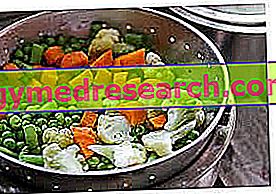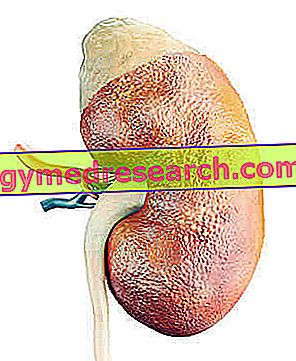Lose vitamins and minerals with cooking
Vitamins and mineral salts are a heterogeneous group of molecules and non-energetic ions, BUT however essential for our body; some vitamins (A, D, E, K) are lipophilic and dissolve in cooking fat (oil, butter, etc.),

Another classification concerns the thermolability or thermostability of food vitamins; some of them boast a more or less heat-resistant structure and as such are called thermosTAbLE vitamins; on the other hand, others inevitably suffer from inactivation by means of cooking, consequently they are classified as thermoLABILE vitamins.
With cooking, ALL foods suffer a certain nutritional loss, a phenomenon that varies according to the nature of the food being processed, the processing itself, the cooking method, the cooking temperature, the type of vitamins and minerals they contain, etc.
Lose vitamins with cooking
To give some examples, thiamine (or vit. B1) appears to be one of the most heat-sensitive molecules; it follows that, with cooking, the food suffers a considerable overall loss, regardless of the technique or system used; on the contrary, riboflavin (vit. B2) is distinguished by an excellent resistance even at sterilization temperatures. Niacin (vit. PP) and pantothenic acid (vit. B5), despite being thermostable vitamins, are however lost due to their remarkable solubility in aqueous cooking liquids. Ascorbic acid (vit. C) is extremely unstable; it is affected both by cooking, by exposure to light and by some enzymes ( ascorbic acid oxidase ), and by contact with copper containers, which is why the plants belonging to the 7th group of foods should be consumed mainly raw.
The fat-soluble vitamins seem on average not very sensitive to heat.
| % LOSS OF AC. ASCORBIC COMPARED TO THE COOKING TREATMENT | ||||||||
| Cotura treatment | spinach | Asparagus | carrots | Cabbages | Rape | Potatoes | peas | tomatoes |
| Boiling | 20-85 | 26-75 | 12-80 | 30-90 | 25-75 | 10-70 | 12-56 | - |
| Pressure cooker | 22 | 18-20 | 22-25 | 22-26 | 24-37 | 10-15 | 12-36 | - |
| Steam powered | 24-70 | 22 | 14-25 | 33-70 | 39 | 15-40 | 24-29 | - |
| Boxing | 60-65 | - | - | - | - | - | - | 25 |
| Frying | - | - | - | - | - | 30-60 | - | - |
Lose the minerals with cooking
As anticipated, the mineral salts are easily soluble in water and since during cooking a certain "exudation" of the organic fluids takes place by the foods, their concentration in the finished product is not comparable to that of the raw food; to limit this inconvenience it is advisable to cook the food in a little water or rather steam, but if this is not possible, it is good practice to preserve the "peel" of the vegetables or to use medium-sized pieces of meat or fish. NB . Reusing the cooking water in order to partially recover the electrolytes dissolved in it allows limiting the loss of salts during cooking.
Below we will list the cooking methods in DECREASING order and on the basis of the GREATER loss of mineral salts, therefore from the most harmful to the most advisable:
- Boiling in MANY water (maximum loss)
- Boiling with little water (medium loss)
- Steam cooking (medium-low loss)
- Boiling with pressure cooker (minimum loss)
- MICROWAVE baking (minimum loss)
- Steam cooking in a pressure cooker (minimum loss)
The most useful technique to limit the loss of mineral salts (and also of vitamins) is the STEAM cooking in a PRESSURE COOKER; with it it is possible to minimize cooking times (preserving the thermolabile vitamins) but without immersing the food (which would facilitate the dispersion of ions and water-soluble molecules).
Why do vegetables change color and consistency through cooking? Is it because of nutritional loss?
The physical change of foods by cooking takes place mainly due to protein alteration, sugars and fats (see the articles: cook the proteins, cook the sugars and cook the fats). On the other hand, in the case of vegetables, the oxidation of carotenoids is the only vitamin alteration attributable to cooking which causes a chromatic modification of the food (lightening), while the typical browning is attributable to the degradation of the chlorophyll contained in them.
Cooking also determines a change in the consistency of the vegetables which, after treatment, are softer and more chewable; this is not due to any nutritional reduction but to the fragmentation of the cellulose possibly facilitated by the addition of sodium bicarbonate in the cooking water.
Bibliography:
- Food and health –S. Rodato, I. Gola - Clitt - pag. 259: 261.



